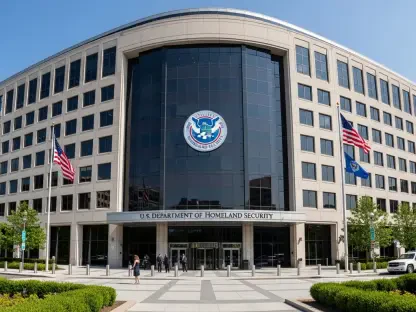In a dramatic move that has sent shockwaves throughout the environmental community and beyond, U.S. President Donald Trump has signed Executive Order 14270. Titled “Zero-Based Regulatory Budgeting to Unleash American Energy,” the decree conceals far-reaching implications beneath its administrative facade. Slated to dismantle regulatory protections that have been in place for over a century, this order mandates the overhaul of every environmental rule related to air, water, species, and public lands, steering them to benefit polluters or risk automatic expiration. This directive sets an unprecedented clock for these alterations, triggering an expiration of any regulation not reauthorized by September 30, 2026. Critics argue that rather than a much-touted bureaucratic efficiency, the order represents a calculated step toward reversing critical environmental safeguards that have protected public health, promoted ecological sustainability, and ensured climate resilience across the United States for generations.
1. Legal Challenges: The First Line of Defense
The swift opposition to Executive Order 14270 has given rise to urgent calls for legal resistance, deemed the most critical line of defense against the onslaught of regulatory rollbacks. Legal experts and environmental organizations have been mobilizing rapidly to contest every expired rule and challenge each unlawful revision. Time is of the essence, as any lapse or delay in initiating legal proceedings might lead to irreversible damage to the environment, public health, and various sectors of the economy that are reliant on stringent environmental regulations.
Each agency affected by Executive Order 14270—including the Environmental Protection Agency (EPA) and the Departments of the Interior and Energy—is under pressure to comply with the newly mandated deadlines. Failure to act means certain expiration of pivotal protections. Environmental justice proponents and legal watchdogs are intensifying their focus on ensuring that agencies are held accountable and comply with statutory obligations before these deadlines elapse.
The challenge lies not only in the volume of regulations at risk but also in the complexity of revising and reauthorizing them in accordance with the new administrative demands. Legal teams are required to navigate an increasingly treacherous landscape, one rigged with legislative loopholes and inadequate resources, creating a high probability of structural failure. Many legal specialists have flagged the enormity of this challenge, suggesting that only a fraction of the jeopardized rules can realistically be reviewed and preserved within the specified timeframe.
2. The Power of Collective Support: Mobilizing Legal and Community Networks
The opposing forces are heavily reliant on public and financial support to sustain their battle against Executive Order 14270. Organizations like Earthjustice, the Natural Resources Defense Council, and the Center for Biological Diversity are already on the front lines, challenging the administration’s decree at various legal levels. Critically underfunded and overstretched, these entities need robust support from concerned citizens to continue their fights effectively. Contributions in the form of donations, expertise, and volunteer work are vital to bolster the ongoing struggle against the executive order.
Forming broader coalitions and building networks of support will be central to creating a robust opposition. By aligning efforts with national, regional, and local groups, supporters can create a more impactful resistance movement. Advocacy, awareness campaigns, and grassroots organizing can all play crucial roles in mobilizing personal and social resources. Cultivating political and public will is vital, rendering environmental, public health, and economic stakes as part of the national dialogue.
3. Mobilizing Political Will and Public Advocacy
In the face of Executive Order 14270, applying pressure on elected officials across all government levels is a strategic move intended to accentuate public concerns about the implications of the executive order. Constituents are urged to consistently engage with their local representatives, governors, and city council members to assert that support for the dismantling of environmental regulations will not be tolerated. Through persistent communication, citizens can make it clear that such political decisions carry significant costs.
Influencing political leaders requires the collective effort of citizens committed to environmental stewardship. The call for transparency, public hearings, and proper scrutiny of these changes is crucial for holding elected officials accountable. Letters, emails, and petitions serve as essential tools in making the political cost of supporting environmentally detrimental decisions painfully apparent. By fostering bipartisan dialogues, individuals can work to ensure environmental preservation remains a priority within the political agenda.
Participating in local government activities also plays an essential role in an effective resistance strategy. Local ordinances, zoning meetings, planning commissions, conservation funding initiatives, and measures to limit harmful practices, like excessive drilling, can collectively shield communities from the adverse environmental fallouts from national policy reversals. Local environmental advocacy groups also provide opportunities for engagement and community action, thus giving voice to concerned citizens and allowing them to have a tangible impact on their environment.
4. The Role of Media and Public Engagement
Media coverage stands as a critical battlefield for shaping public perception and driving momentum against Executive Order 14270. It is crucial that the dismantling of decades-long environmental protections remains chronicled – firmly and accurately—across a landscape both national and local. Public attention, fueled by consistent media coverage, is essential in preventing the order’s consequences from becoming normalized or overlooked.
Though national media sources are expected to cover this critical issue, their resources and perspectives may be limited, and their coverage sporadic. Herein lies the opportunity—and the responsibility—for local and independent media to bridge the gaps. By disseminating stories and elevating frontline voices, they play a pivotal role in drawing awareness to the human cost of eroding environmental protections. A consistent media spotlight creates pressure: on policymakers, on stakeholders, and on communities to address these pressing challenges.
Engaging directly with the media, interested individuals and groups can contribute to this dialogue, ensuring that diverse and often underrepresented narratives reach broader audiences. This collective effort can take the form of op-eds, letters to editors, interviews, and social media campaigns that keep the conversation visible and relevant. Public demonstrations and advocacy further supplement these efforts by showcasing visible opposition to the executive order, compelling listeners, readers, and viewers to engage and reflect.
5. A Call to Action and Looking Forward
The swift backlash against Executive Order 14270 has ignited urgent calls for legal intervention, seen as the most crucial defense against aggressive rollbacks of regulations. Legal experts and environmental groups are swiftly assembling to contest every expired regulation and challenge each unlawful amendment. With time being a critical factor, delays in launching legal actions could result in irrevocable harm to the environment, public health, and various economic sectors that rely on strict environmental guidelines.
Agencies affected by Executive Order 14270, including the EPA and the Departments of the Interior and Energy, face mounting pressure to adhere to newly imposed deadlines. Non-compliance threatens the expiration of essential protections. Advocates for environmental justice and legal monitors are keenly focused on ensuring these agencies meet their statutory obligations before the deadlines pass.
The difficulty lies not only in the sheer number of regulations at stake but also in the complex process of revising and reauthorizing them under new administrative guidelines. Legal teams must navigate a challenging landscape fraught with legislative loopholes and inadequate resources, increasing the risk of structural failure. Many legal experts have noted the scale of this challenge, indicating that realistically only a fraction of the threatened rules can be evaluated and preserved within the set timeframe.









